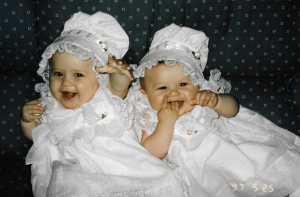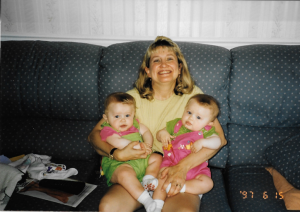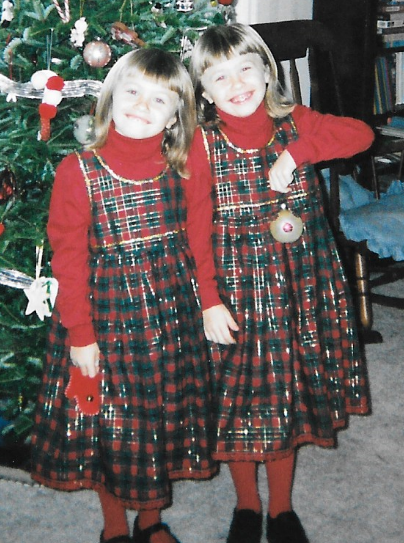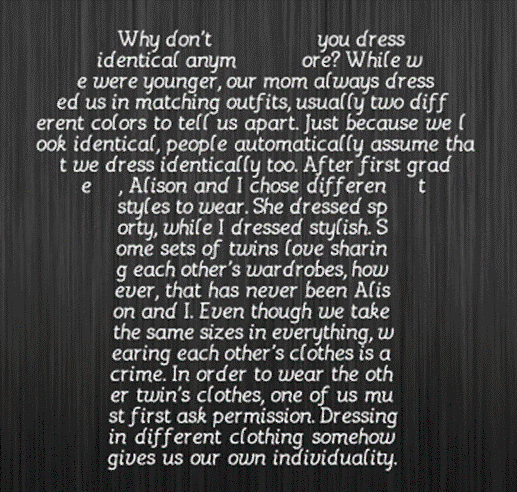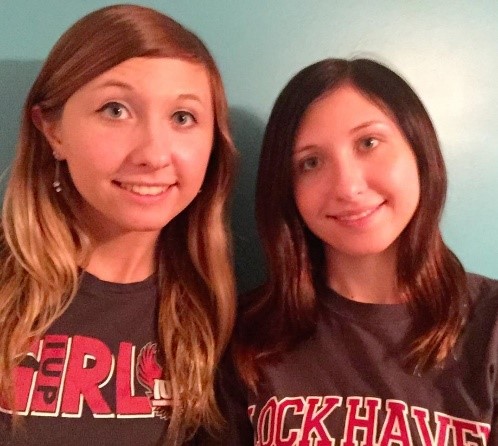Cadence Thomas (Sports Drinks: Physical Enhancers or Athletic Alcohol)
Sports Drinks: Physical Enhancers or Athletic Alcohol
Cadence Thomas
Sahar Al- Shoubaki
English 101 Composition 1 Section 041
November 20, 2017
Sports Drinks: Physical Enhancers or Athletic Alcohol
I am sure we have all visited the drink aisle of our local grocery stores. We walk through the aisles, navigated by the signs above that read water, soda, juice, and sports drinks. For decades, sports drink companies have been competing amongst each other to develop the ultimate product. A drink that hydrates, gives energy, and replenishes electrolytes. These companies more notably include Gatorade, Vitamin Water, Powerade, and most recently, Body Armor. These companies claim that their products are healthy and helpful to and for the human body in all assets, but there are those who argue against this. I believe these drinks do more good than harm. I also believe that they do what companies claim. Sports drinks are effective in terms of helping enhance athletes’ performances and are healthy for the human body when used correctly.
Let us take a step back to the year 1965. In 1965, The Unites States was at war with Vietnam, African Americans were given the right to vote, and Gatorade was invented. Gatorade was introduced to the public on September 9, 1965 (Gatorade 1). It was created by a group of scientists at the University of Florida located in Gainesville, Florida. It’s goal, to replenish electrolytes being sweated out by athletes thus restoring the athlete’s energy and bettering their performance. Gatorade was the first drink of its kind and set the bar for all other companies and brands.
Many have asked the question, do sports drink actually enhance an athlete’s performance? I think this question can be answered with another: is there a difference in the performances between an athlete who consumes these drinks and one that does not? In either case, I believe the answer to be yes. There have been several studies and experiments conducted to find the answers to these questions. It has been proven that sports drinks rehydrate the body thus enhancing the athlete’s performance. According to the sports medical journal, hydration is imperative for optimal performance for all athletes. Athletes who develop a systematic method of ensuring they are consistently hydrated have better recovery and higher energy levels. When an athlete is adequately hydrated, their body is able to transport nutrients and oxygen to working muscles and aid muscle repair, remove lactic acid build up, eliminate nitrogenous waste and regulate body temperature. Losing as little as two percent of body weight through sweat can impair an athlete’s ability to perform due to a low blood volume and less than optimal utilization of nutrients and oxygen (SportMedBC). Hydration is key in terms of athletic performance. An athlete that is properly hydrated will almost always perform better than an athlete who is not. An argument can be made that sports drinks will dehydrate the athlete, but this is only if used incorrectly by the athlete. Sports drinks are only successful when used correctly. They should only be used if physical activity last for one hour or more and in combination with water.
Not only do sports drinks enhance performance by hydration, they also offer small energy boosts to the athlete, which can help result in a better performance. We can all recall our parents saying, “That’s enough candy, too much will make you hyper.” This is because candy possesses glucose, or sugar. Sports drinks also possess an exceptional amount of sugar. Once the drink is digested, this sugar begins circulating through the blood. The sugar is then transformed into energy, which is used by the athlete. Some may argue that the amount of sugar in sports drink is unhealthy however, once again if used correctly, the sugar poses no immediate threat to the health of the athlete (Kravitz 4).
Another question often asked, can sports drinks be harmful to the human body? Sugar is but one ingredient that leads people to believe that sports drinks are harmful. I think an effective way to answer this is to take a look at the main ingredients used and what exactly they do. They include water, citric acid, salt, potassium, vitamin A, vitamin B, and artificial dye. Water is used as the base of almost all drinks. Citric acid adds flavor to the drink. Salt is used in the drink to replace the amounts of salt be excreted through the athlete’s sweat. Vitamin A is a good way to include antioxidants, which help to keep the body strong, as well as defend cells against free radical damage (Jureviciene 5). Vitamin B is also used, but as an energy supplier in order to increase the body’s stamina. The artificial dye is used for color. All of the ingredients listed pose no threat to the human body unless consumed in mass quantities at a time (Anderson 45). It is true that overtime, the consumption of sports drink can lead to health issues like dehydration or kidney stones. However, this is one again only if used incorrectly. If athletes are using the drinks properly, under the right circumstances and with water, there should be no reason to fear these products.
When is come to companies such as Gatorade, Vitamin Water, Body Armor and Powerade, one question still remains. Which product is the best? Now that we have an idea of what exactly sports drinks do to help athletes, we can begin to take a look into which companies have the best products. Since all products have the same goal, to hydrate and replenish electrolytes, taking a look at the nutrition facts will help to distinguish the top product from the worst. When it comes to sports drinks, there are three main things to check for on the nutrition facts label; sugar, sodium, and carbohydrates.
Gatorade and Powerade both contain thirty-five grams of sugar per bottle, while Vitamin Water contain thirty-two grams and Body Armor contains seventeen. In terms of sodium, Gatorade once again has the highest amount with 275 milligrams per bottle, while Powerade contains 250 grams. Body Armor and Vitamin Water are much lower. Body Armor ranges from thirty to forty-five milligrams depending on the flavor while Vitamin Water posts a zero in the sodium category. Carbohydrates are the most important factor in an energy drink. They are what the body creates energy from. In a sports drink, carbs are often equal to the amount of sugar. This is because the source of the carbs comes from a mixture glucose and fructose, both sugars (SportMedBC). This means that Gatorade and Powerade will both contain thirty-five grams of carbohydrates, while Vitamin Water contains thirty-two grams and Body Armor contains about eighteen.
According to these three categories, Gatorade is the ultimate sports drink. While it does have the highest amount of sugar, it also has the highest amount of sodium and carbs, two things that are crucial for a sports drink to accomplish its purpose. The sodium in the drink replaces that sweated out by the athlete. The more exerted the athlete, the more they will sweat. The more the athlete sweats, the more sodium there is being excreted. This sodium must be replaced. As mentioned earlier, carbs are what gives the body energy. Second, we have Powerade, which like Gatorade is high in sugar, but also high in sodium and carbs. Body Armor comes in at third due to the fact that Vitamin Water contains absolutely zero sodium, which is key in enhancing an athlete’s performance.
Now as we walk down that drink aisle, we should be able to better recognize sports drinks and how they benefit us as athletes, as well as what to look for in a good product. Sports drinks are effective in terms of helping enhance athletes’ performances and are healthy for the human body when used correctly. If used correctly, there should never be any question of negative effects. These drinks rehydrate the body while simultaneously providing it with energy. Athletes across the globe have used sports drinks for years and have no plan on stopping, so long as these products continue to prove effective.
Works Cited
Anderson, Nina, and I. Gerald. Olarsch. Analyzing Sports Drink: What’s Right for You? Carbohydrate or Electrolyte Replacement? Text. Safe Goods/New Century Pub., 2000.
“Gatorade .” Gatorade History Comments, Gatorade, 1 Jan. 2012,` Accessed 25 Nov. 2017 www.gatorade.co.nz/history
Jerry, Mayo, and Kravitz Len. “Sports & Energy Drinks: Answers for Fitness Professionals.” Sports & Energy Drinks, University of New Mexico, 20 June 2013. Web. www.unm.edu/~lkravitz/Article%20folder/sportsdrinksUNM.html.
Jureviciene, Leva. “Top Sports Drink Ingredients .” Top Ingredients for Sports Drinks, 4 Nov. 2011. Web. www.mydrinkbeverages.com/top-ingredients-for-sports-drinks.
“Sports Drinks and Athletic Performance.” Sports Drinks and Athletic Performance |
SportMedBC, SportMedBC, 30 Sep. 2014, Accessed 25 Nov. 2017. Web. sportmedbc.com/article/sports-drinks-and-athletic-performance
Time Magazine “What’s the Best Way to Rehydrate-Besides Water?” Time, Time, 26 May 2014, time.com/4873725/dehydration-drink-water/.
Zelman, Kathleen M. “Drink Up for Sports and Fitness.” WebMD, WebMD, 17 Apr. 2011. Web. www.webmd.com/fitness-exercise/features/drink-up-sports-fitness#1.



